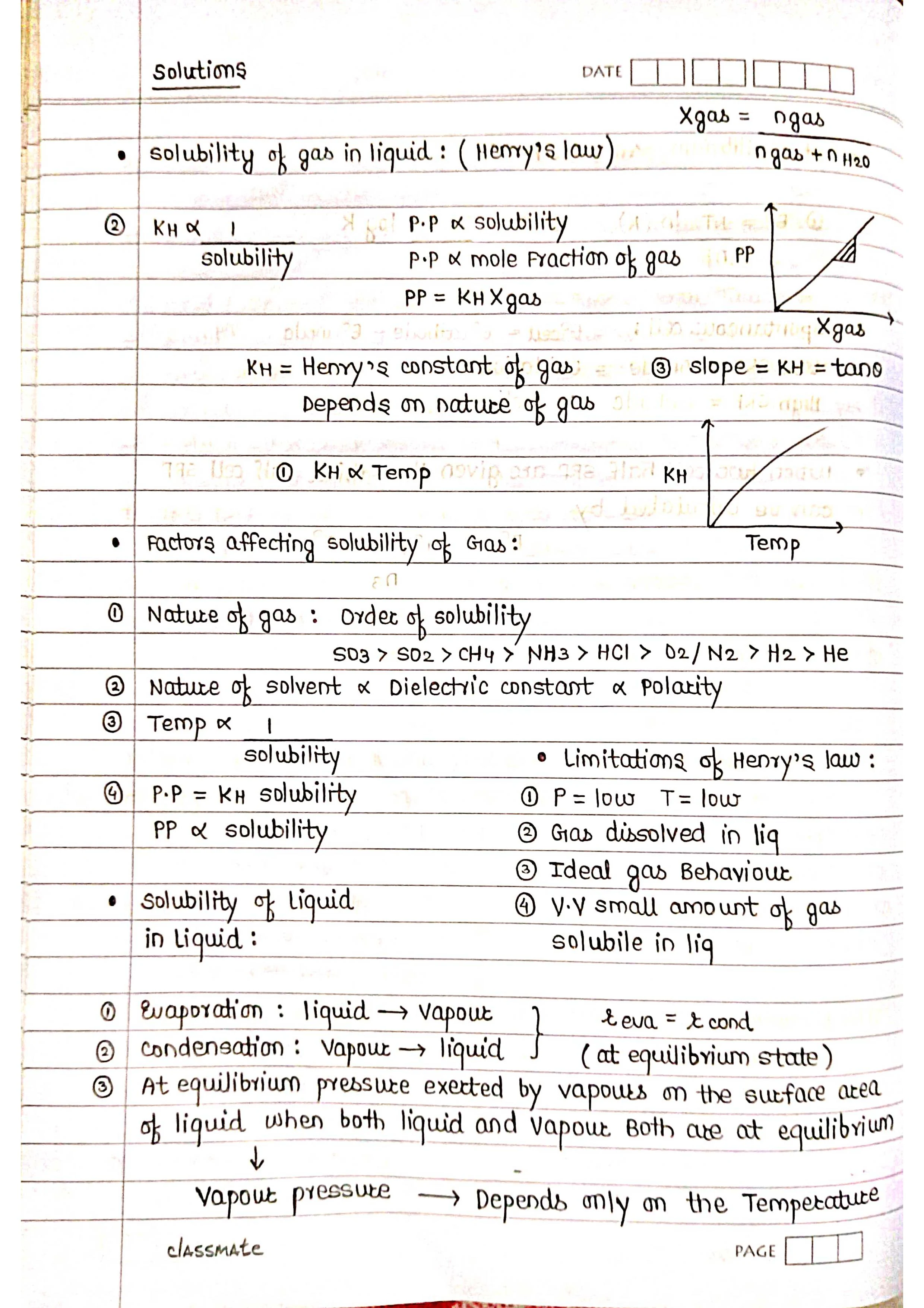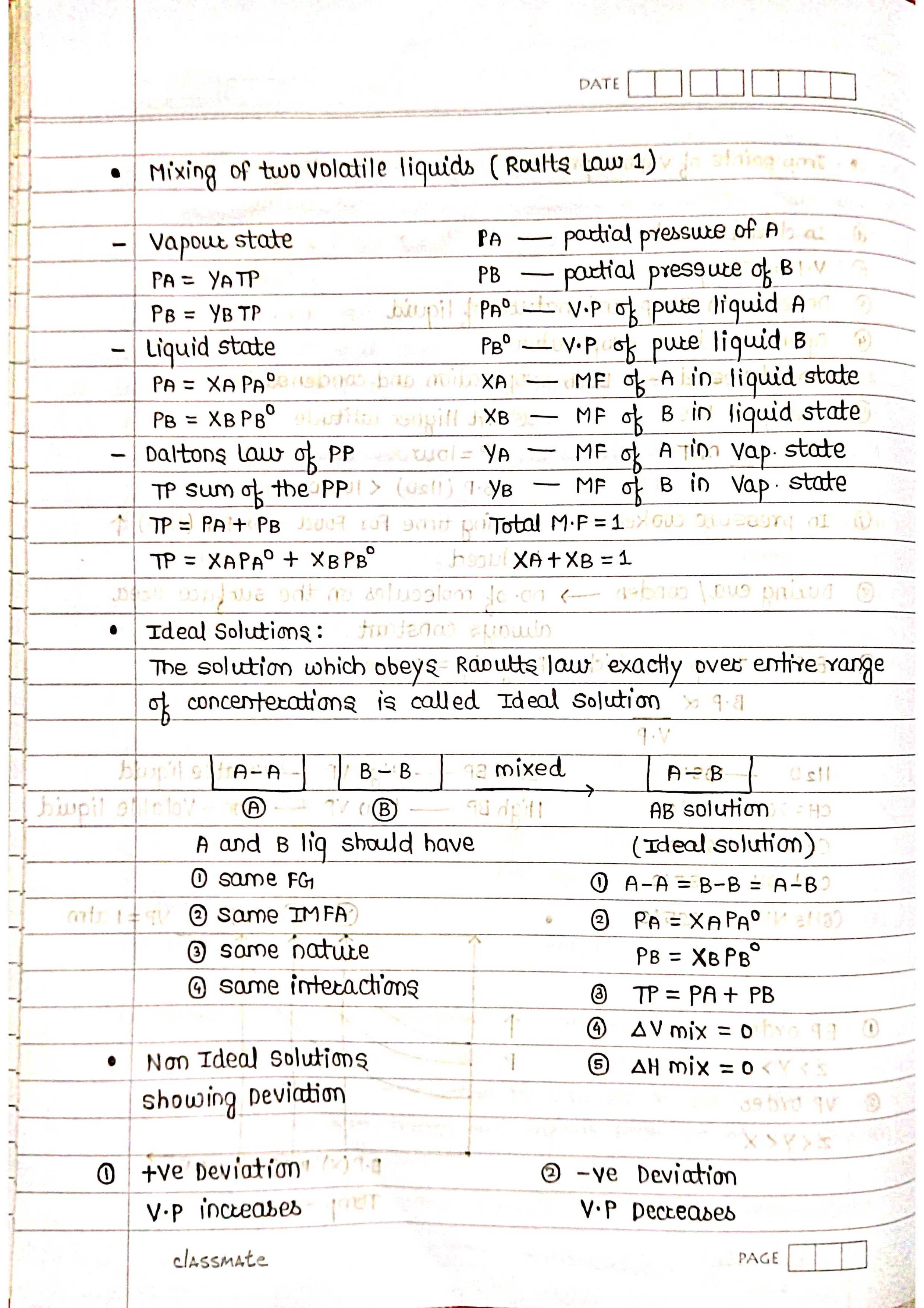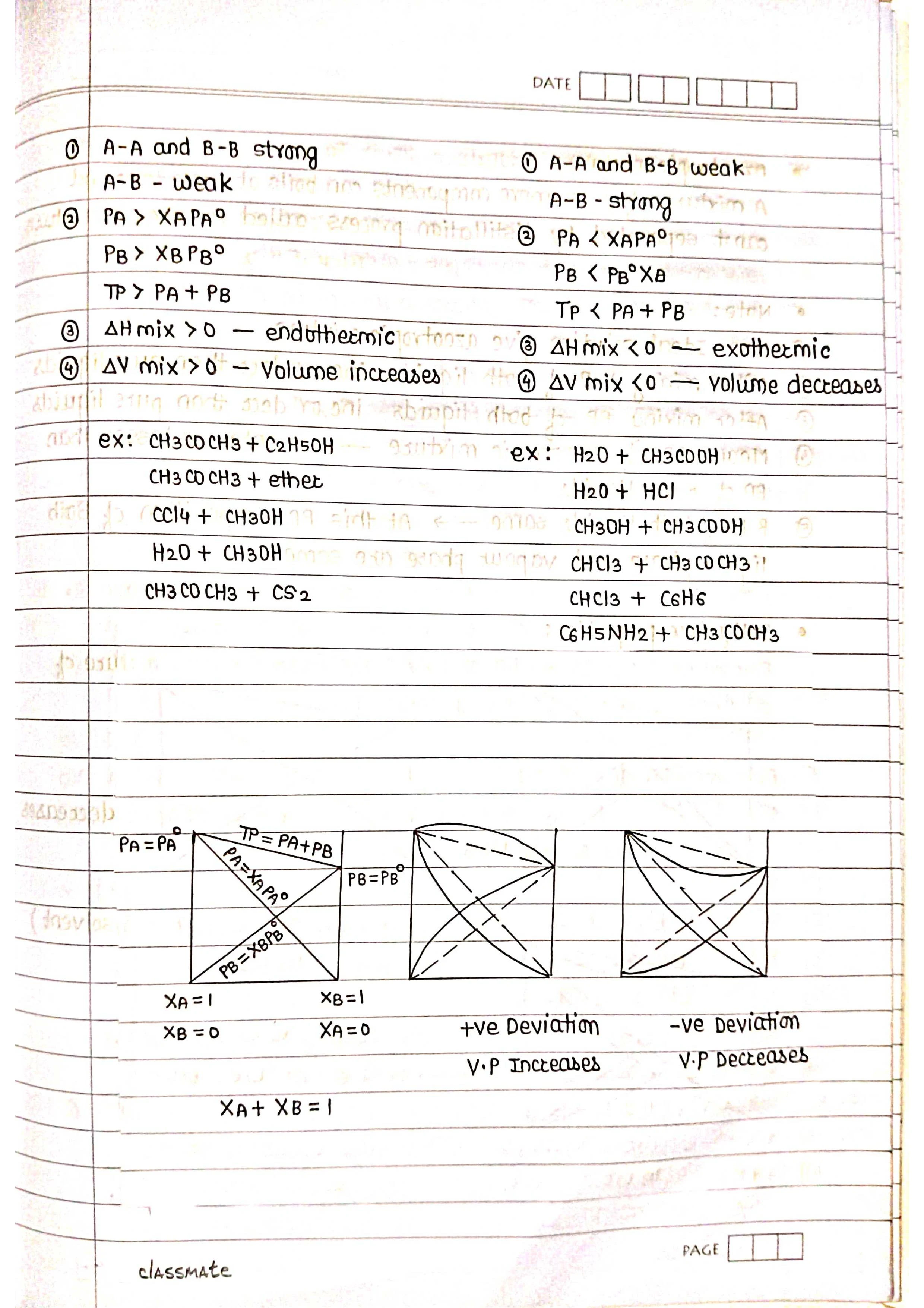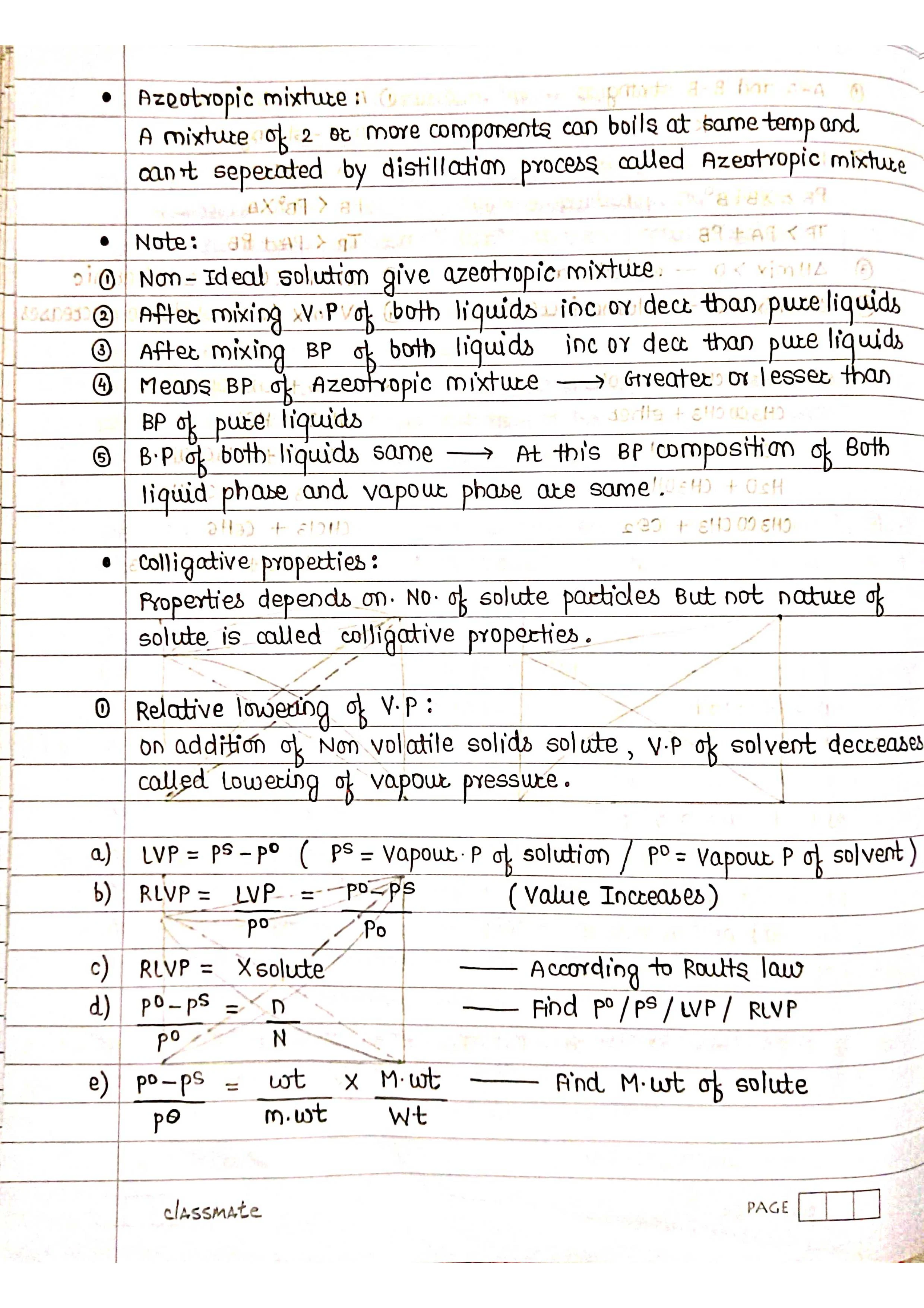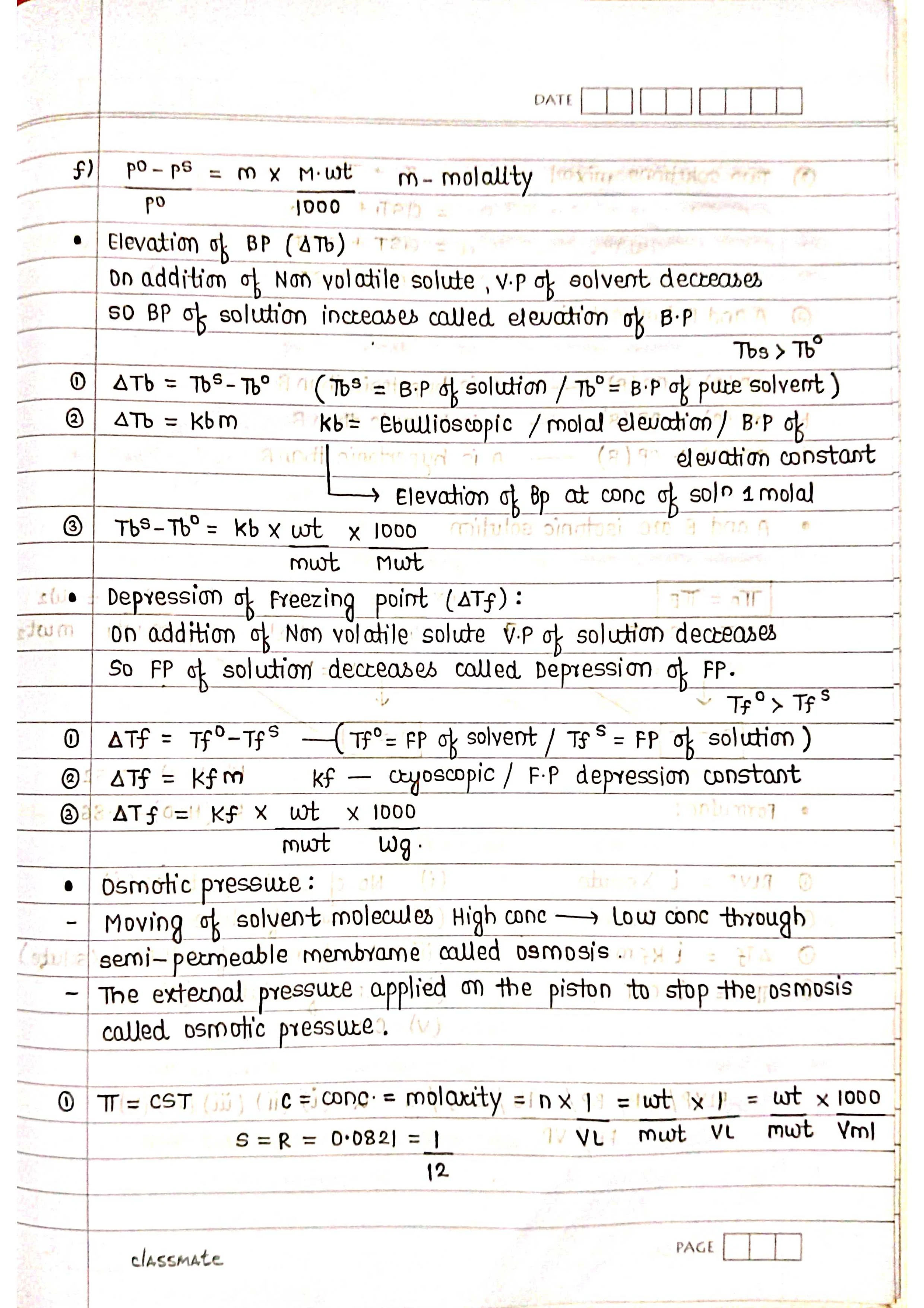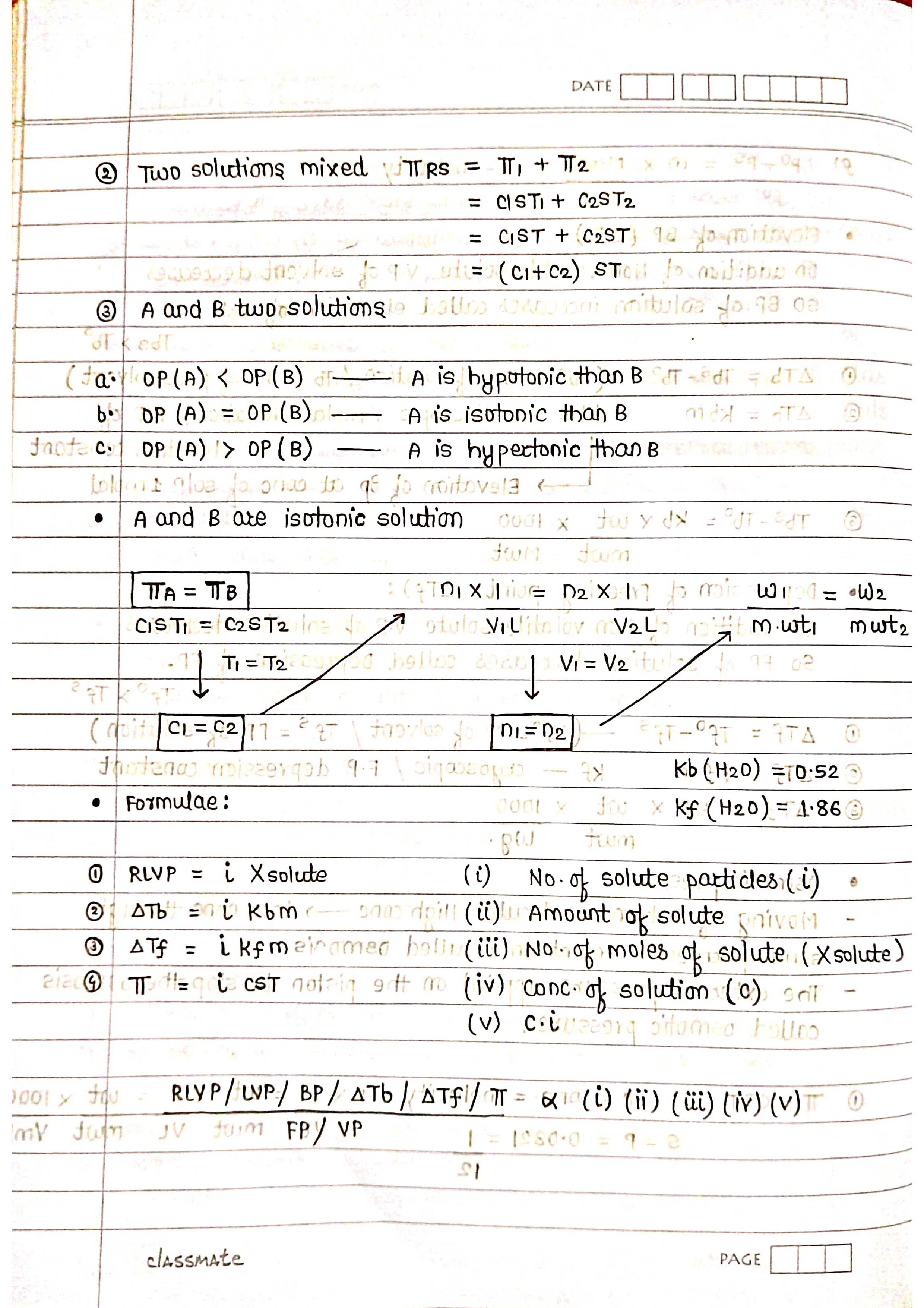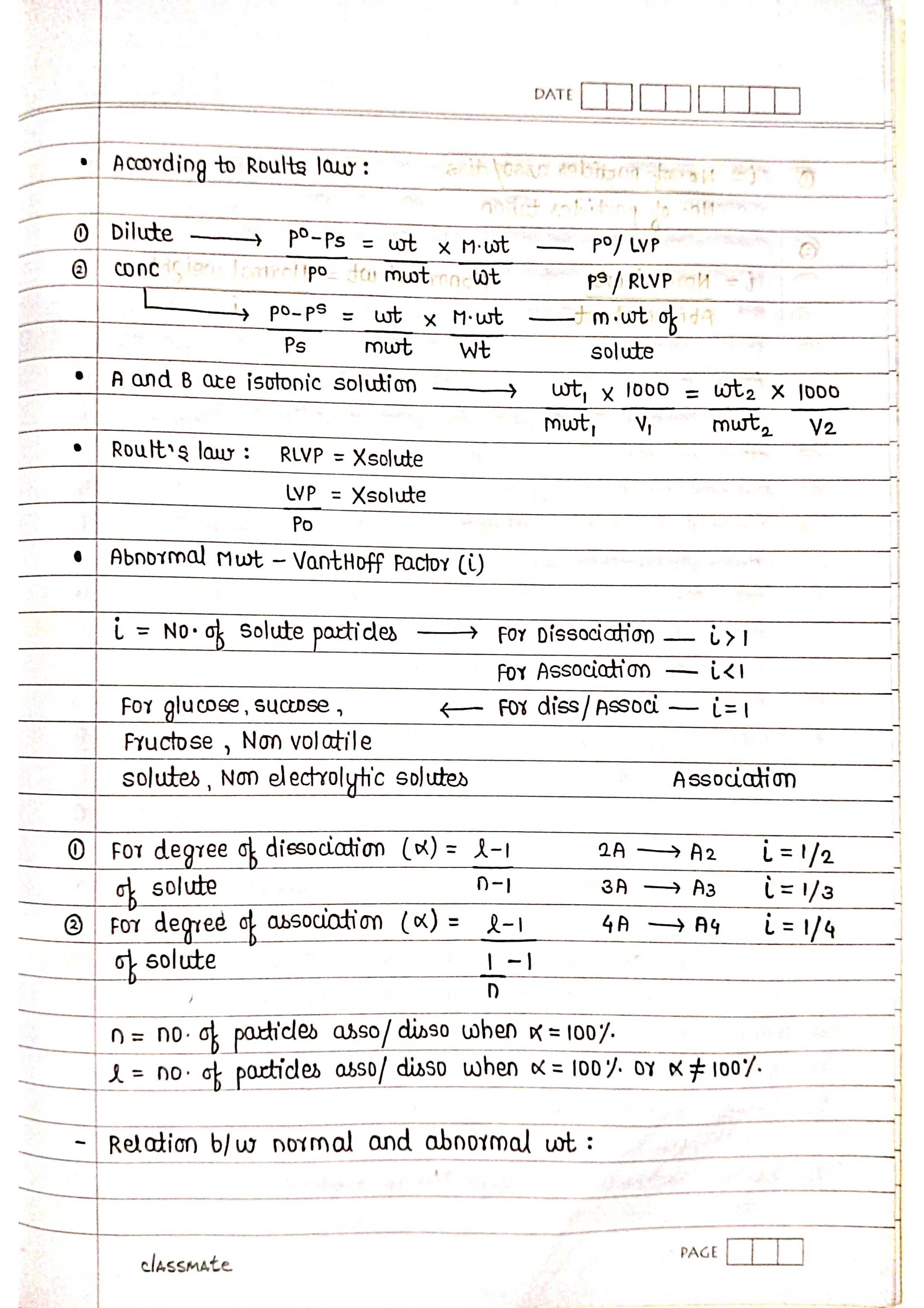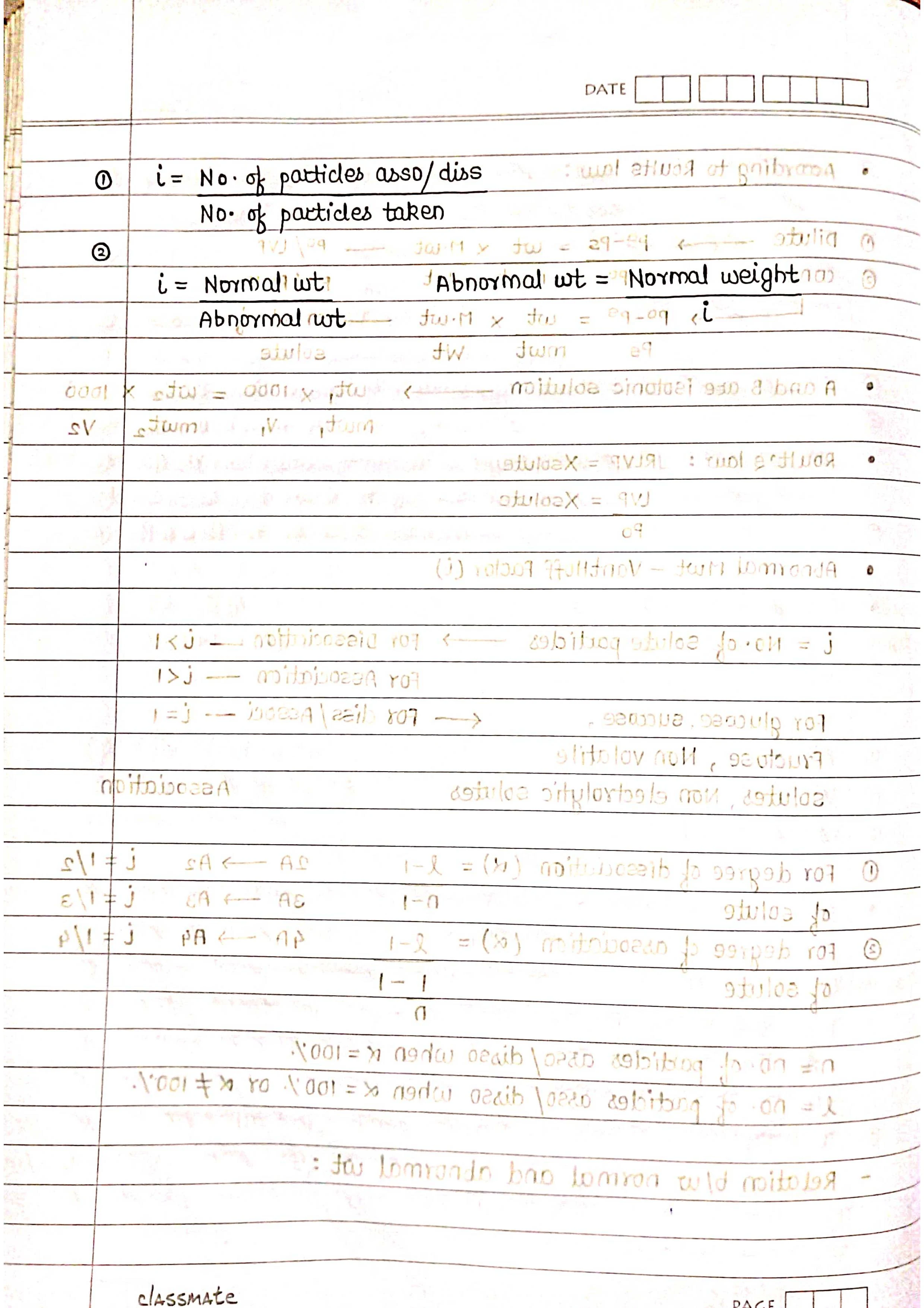Definition:
A solution is a homogeneous mixture of two or more substances where the particles of one substance (solute) are dispersed uniformly throughout another substance (solvent).
Components:
➡️ Solvent: The component present in the larger quantity, determining the physical state of the solution (e.g., water in saltwater).
➡️ Solute: The component present in the smaller quantity (e.g., salt in saltwater).
Types of Solutions:
➭ Binary solutions: Contain two components (e.g., salt in water).
➭ Concentrated solutions: Have a high proportion of solute compared to solvent.
➭ Dilute solutions: Have a low proportion of solute compared to solvent.
➭ Unsaturated solutions: Have less solute than the maximum amount that can be dissolved at a given temperature.
➭ Saturated solutions: Have the maximum amount of solute that can be dissolved at a given temperature.
➭ Supersaturated solutions: Contain more solute than would normally be stable at a given temperature.
Concentration Units:
➭ Mass percentage (%w/w): Grams of solute per 100 grams of solution.
➭ Volume percentage (%v/v): Milliliters of solute per 100 milliliters of solution.
➭ Molarity (M): Moles of solute per liter of solution.
➭ Molality (m): Moles of solute per kilogram of solvent.
Colligative Properties:
Properties that depend on the concentration of the solute particles, not their identity.
➭ Boiling point elevation: The boiling point of a solution is higher than that of the pure solvent.
➭ Freezing point depression: The freezing point of a solution is lower than that of the pure solvent.
➭ Vapor pressure lowering: The vapor pressure of a solution is lower than that of the pure solvent.
➭ Osmotic pressure: The pressure required to prevent the flow of pure solvent into a solution across a semipermeable membrane.



